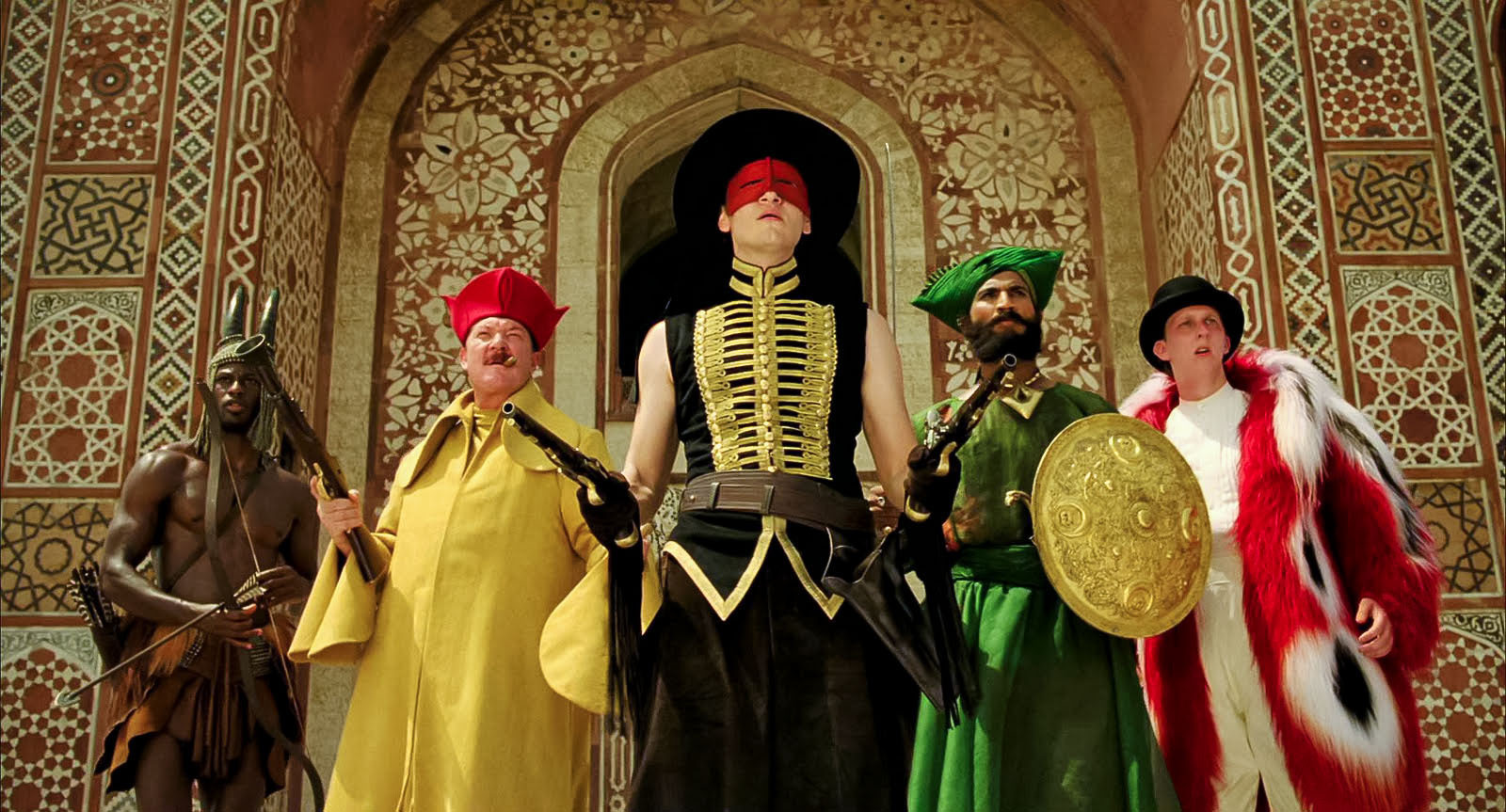
Beauty and style are truly in the eye of the beholder. An art form that makes one gape in awe with its splendor might leave another unimpressed, perplexed or even disapproving. Everyone can cast something aside because it is not their “cup of tea,” making art (in our case, cinema) all the more interesting, personal and truly unique.
There are some cases, however, where movies transcend opinions and unite different tastes. And while one can argue about the concept, moral or meaning of these movies, he certainly cannot deny their beauty and style. But what is style and what is its purpose and artistic influence in the medium?
There are a lot of ways a distinct aesthetic can be achieved. For example, cinematography, costumes and clothing, memorable depiction of a certain age, dialogue, natural exterior environments and many more. What makes a movie stylish however is not its production, vivid colors or wardrobe alone. Whether a movie prioritizes looks over a deeper meaning, it must have charm and character, combining them with the aforementioned aesthetics. This is true style.
Cinema has gone a long way since its humble beginning in late 19th and early 20th century. Graphics, technical means, equipment and ideas improve tremendously as the years go by, allowing filmmakers to push the aesthetic boundaries of cinema even further. Despite the fact that the past century blessed us with marvels of cinema and style, the cinema of the 21st century, since its dawn in 2000, never ceases to amaze or thrill.
Luckily for us cinephiles, the possibilities and the movies worth mentioning are nearly endless, but this a list of 10 breathtaking and absolutely gorgeous movies that represent the 21st century so far.
10. Midnight In Paris (2011)
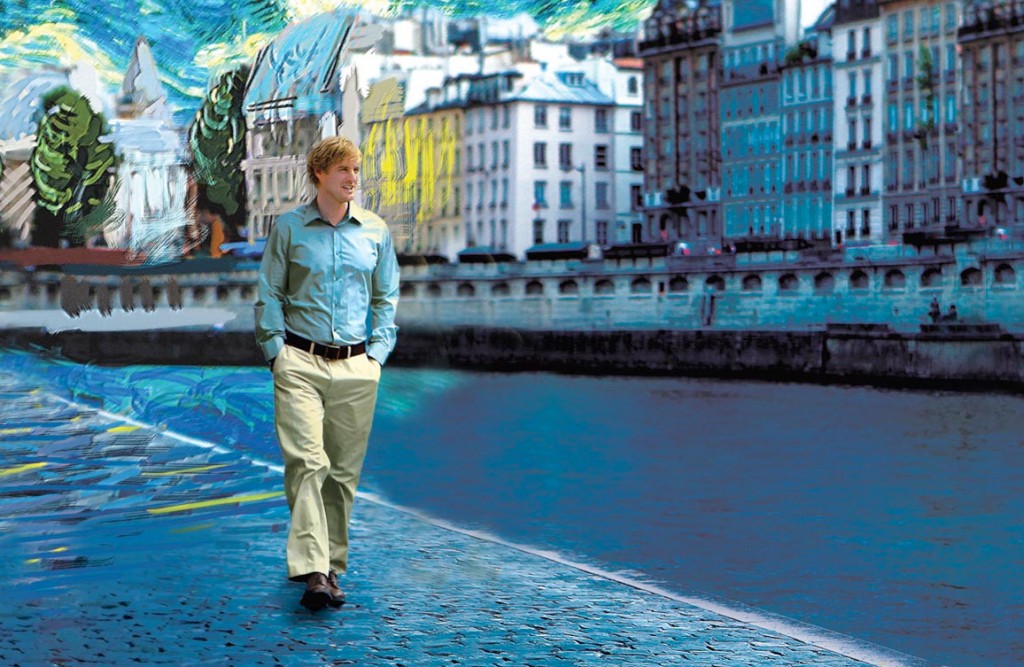
Woody Allen is an absolute legend of cinema, remaining as influential as ever to younger generations of filmmakers with his distinct style, witty dialogue, sharp satire and musical preferences. “Midnight in Paris” is often regarded among his finest works (and arguably his finest of the past decade), which is no small feat.
The ingenious plot revolves around a screenwriter, who along with his fiancée and her family take a trip to Paris. Unable to communicate and cope with his fiancée and her circle, he finds himself travelling back in the 1920s everyday at midnight, meeting all sorts of quirky characters (known and unknown).
The directing is heartwarming and nostalgic, to say the least, utilizing a soft color palette mainly focused on yellow, bringing the Charleston era to life masterfully. The costumes, hats, Parisian bistro and bars are gorgeous, traversing the viewer to an era long past where everything was completely different.
Owen Wilson IS Woody Allen. He portrays the character wonderfully, delivering his lines with ease, with Allen’s signature nervous talking and babbling always present, making him an absolute joy to watch. He is also surrounded by other well known characters of the era like Ernest Hemingway, Pablo Picasso, Salvador Dali, Francis Scott Fitzgerald, and many more who complete the picture perfectly.
Paris was (and is) the epicenter of art in the 1920s, thus following a character from the modern era as he interacts with historical figures who defined art as a whole, and peeping into their lives and psyche is a true screenwriting marvel.
The ever-present musical score could not have been anything else but superb as 1920s jazz and Charleston was always Allen’s trademark. Yet in this particular movie the score is extra charming compared to a movie set modern era as it exemplifies the 1920s as a whole. It feels as relevant as ever, in a time period where everything was revolving around music. Of course, the movie chooses to idealize the era for a reason.
It is our protagonist’s escape from reality, routine and snobbish, materialistic relatives. It is presented exactly how he wants to see the 1920s and it is absolutely charming. Of course, the era and its characters are haunted by the devastation of the World War I, making the transition to the interwar period, but it still gives you the impression that everything was simpler.
Allen uses style as means of recreating a world that feels genuine and alive for the audience to get lost into along with the protagonist. It is a sophisticated commentary on modernism and the role of nostalgia in our lives, as the movie wavers between two worlds that share so little yet so much indeed.
9. Road To Perdition (2002)
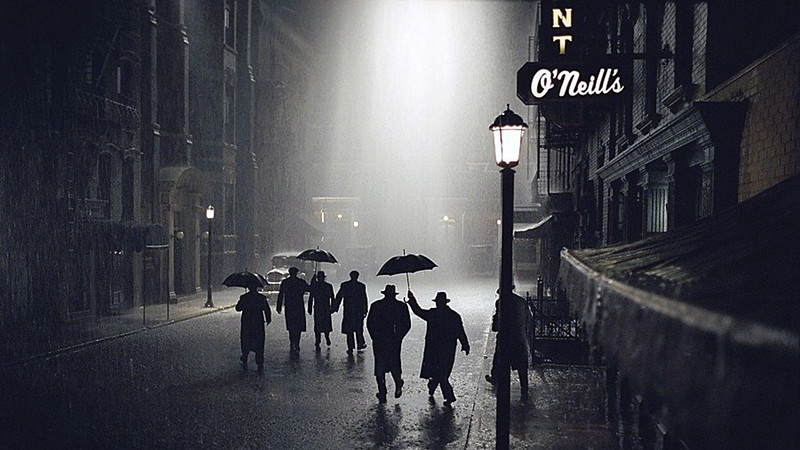
“Once Upon a Time in America” and “The Godfather” are undoubtedly the greatest gangster movies ever made. Having such sky high standards in the genre, it is truly a colossal achievement if a filmmaker manages to create a movie that stands out and has actual meaning behind all the violence and backstabbing.
Sam Mendes is a great director who always spices up his movies with an irresistible charm and style. “American Beauty” (1999), which is arguably his most famous film, would have been a member of this list if it was made a year later. Fortunately, Mendes adapted Max Allan Collins’ “Road to Perdition” truly masterfully.
The setting of the movie is a staple for gangster movies. In the Great Depression / Prohibition Era, a mob enforcer, played by Tom Hanks, having escaped an assassination attempt, seeks revenge against the man who murdered the rest of his family. His sole companion is his son, who also managed to survive.
Conrad Hall’s cinematography is superlative. Along with Mendes’ choice of minimizing dialogue and exposition, he exalts feeling and emotion simply through images, utilizing silence perfectly. The atmosphere is intoxicating with dim-lighted streets, symbolic use of heavy rain, and alternating wide lenses to maximize emotion. Yet there is a coldness and emotional detachment encircling the movie as well.
Its themes revolve around vengeance, redemption, self-knowing, and what violence may induce, as well as family relations (every great gangster movie should include themes of family). Hanks’ character, who is torn between revenge and regret about his life choices, understanding that tragedy and violence brought him and his son close and wishes to save him from his mistakes, is an equally redeemable and irredeemable character, making the movie all the more interesting.
Of course, there are a ton of movies set in the same era, tackling similar themes. But what makes this movie so special is its unprecedented and ever-present style and raw emotion. The wardrobe choices, the houses, the ominous streets, the rain and water (so much water!) which serves as a repetitive motif about death, the sound effects, and the haunting images serve as a reminder of what art can achieve.
8. Zatoichi (2003)
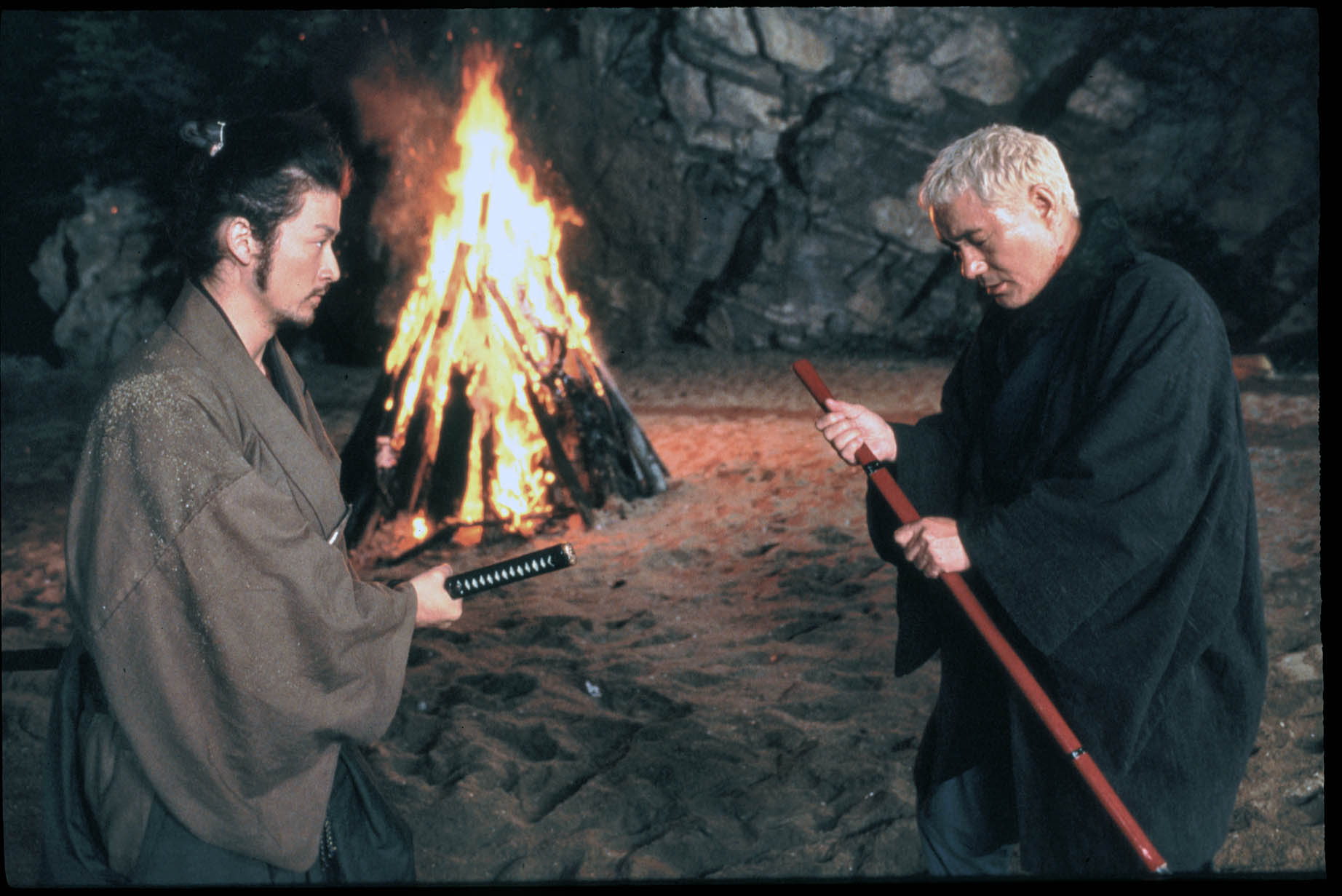
This film is an absolute joy to watch over and over again. Stylish and visual films are often disregarded by the average viewer as too artsy. This is not the case with “Zatoichi,” as it doesn’t heavily rely on Japanese culture, samurai code, or other tropes of ”serious” samurai movies.
Takeshi Kitano revitalizes a cult icon of Japanese pop culture, Zatoichi, who is one of Japan’s most famous characters along with Tora-san of the ”Otoko wa Tsurai yo” series, making him and the lore the surrounds him, known to western audiences.
In this version of the titular hero, played by Kitano himself, Zatoichi, a blind seemingly helpless old man, arrives in a town terrorized by gangs, murder and other shady business. Meanwhile he offers his services to two geisha sisters seeking revenge for the death of their father.
The most charming aspect of Zatoichi is most certainly his anti-heroism. He is a soldier of fortune who gambles, doesn’t follow a strict code, and is often deceptive and merciless, thus debunking the false idea that samurai were always incorruptible, code-following heroes. He is a true anti-hero, driven by morale and selfish desires equally, making him all the more endearing.
What makes the movie eligible for this list, however, is the exceptional directing of Kitano. Many great directors have adapted Kan Shimozawa’s creation before him, but this version is a breath of fresh air. Highly stylized violence, slow motion, faithful clothing of the era like haori and kimonos, breathtaking settings, and outdoor locations are just the tip of the iceberg.
Kitano, influenced by masters like Kurosawa, Eiichi Kudo and Kobayashi as well as great Chinese directors like Zhang Yimou (whose movies would have been on this list if they were lengthier), created a marvel of modern Japanese cinema.
Moreover, it is not a senseless style over substance movie. It is lyrical, like a Kurosawa or Hiroshi Inagaki film, brutal and violent, like a Kudo or Kobayashi film, over the top like a Miike film, yet emotional and chilling. A prime example is the bamboo forest battle in the rain, which couldn’t have been more epic and lyrical.
Great visuals, great settings, great fun!
7. Spring, Summer, Fall, Winter… And Spring (2003)
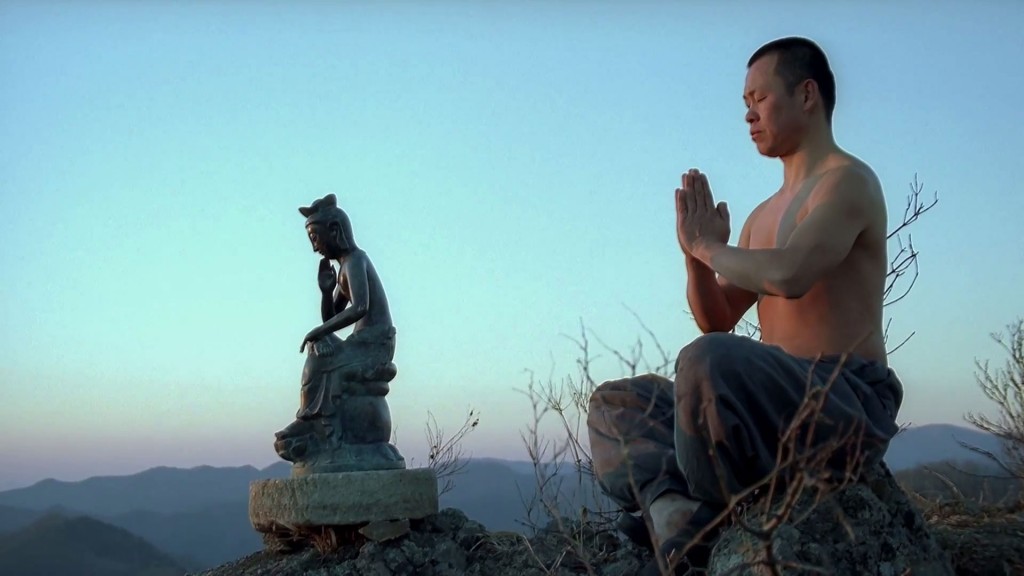
This is probably this most well known movie of Korean master director Kim Ki-duk, made famous by Roger Ebert. It is an absolutely gorgeous piece of art, transcending the boundaries of film as it relies more on philosophy and Buddhist ideas than conventional storytelling and narrative. The dialogue is sparse and the characters and their motives are often alien to Western audiences, yet it is exactly those aspects that make the movie compelling.
The simple plot follows a boy through his life journey as he is raised by a Buddhist monk, isolated from the rest of the world. All those years of isolation and strict religious rules hinder his adaptation with the modern world as he struggles to contemplate even his own feelings.
The title, and the passing of seasons in general, serve as a metaphor for lost time, desires that come and go, and the Buddhist belief of cyclic existence (samsara). This motif is constantly reappearing and indicated by other Buddhist symbols, statues and imagery. The movie is drenched in symbolism that goes deep into the Buddhist religion, but is unfortunately irrelevant for this list.
What is relevant, however, is the movie’s indescribable beauty and stylish approach. Every frame is a work of art and could have been hanging in a gallery or museum. The constant season changes and the flowing timeline are handled by Kim as if they were verses of a long poem somehow connected with each other. Every season, serving as a different metaphor for developing emotions, has its own distinct style and cinematography approach.
Combining these elements with the minimalistic style of Buddhism concerning clothing, decoration, a new contradiction emerges. A secluded, modest temple flowing amidst a pond, surrounded by flourishing nature, serves as a new allegory about existence and the insignificance of man facing time and cosmos.
Embracing the Buddhist belief of self-relinquishment (muga in Japanese or anatman in Sanskrit), perceiving all things with the senses thus becoming one with nature and being non-possessive, one can withstand time ultimately reaching enlightenment.
6. The Grand Budapest Hotel (2014)
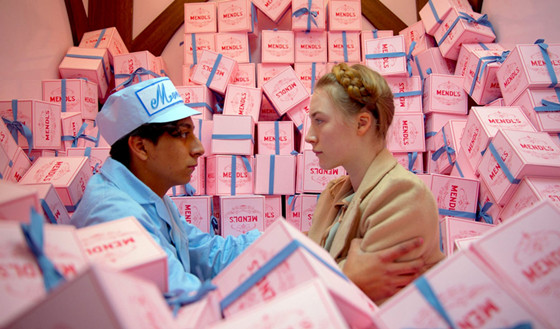
A stylish movie list without at least one Wes Anderson movie would be blasphemy. Literally every single one of his movies could have been chosen for this list. Every movie is an absolute pleasure to watch, with high rewatchability value as every time you sit through them you discover even more details left unnoticed. Arguably the most stylish creation of Anderson to date is “The Grand Budapest Hotel.”
In the interwar in the fictional republic of Zubrowka, we follow the misadventures of a prestigious hotel concierge and his lobby boy sidekick as they get involved in the theft of a priceless Renaissance painting and the dividing of a family fortune.
The vitriolic humor shifts between delicate and vulgar in the blink of an eye, the characters are absolutely nuts, and the plot gets out of hand really quickly. Yet all of these marvelous aspects are overshadowed by the setting.
The titular hotel is just unreal! One could simply sit back and enjoy a one and a half-hour tour of the hotel, without plot, without blinking an eye. It is that mesmerizing! Anderson’s color palette mainly consists of red, purple and yellow (of course), skyrocketing the cinematography of Robert Yeoman to space and beyond. Every room of the hotel, every costume, every scene feels like being inside a maquette or a dollhouse, yet somehow everything seems alive and vivid.
The geometry and symmetry of the frames are unbelievable (as always), making Anderson’s inspiration of Stanley Kubrick’s work all the more obvious, and the sheer amount of details imported into each frame is overwhelming.
The acting by the all-star cast is superb, especially Ralph Fiennes, whose portrayal of the temperamental foul-mouthed gigolo concierge is just hilarious. There are some show-stealing cameos as well, like Tilda Swinton who is once again unrecognizable.
It is light-hearted yet heartwarming, sensible yet spontaneous, witty and quirky, smart yet silly, but overall an absolute gem of a movie.